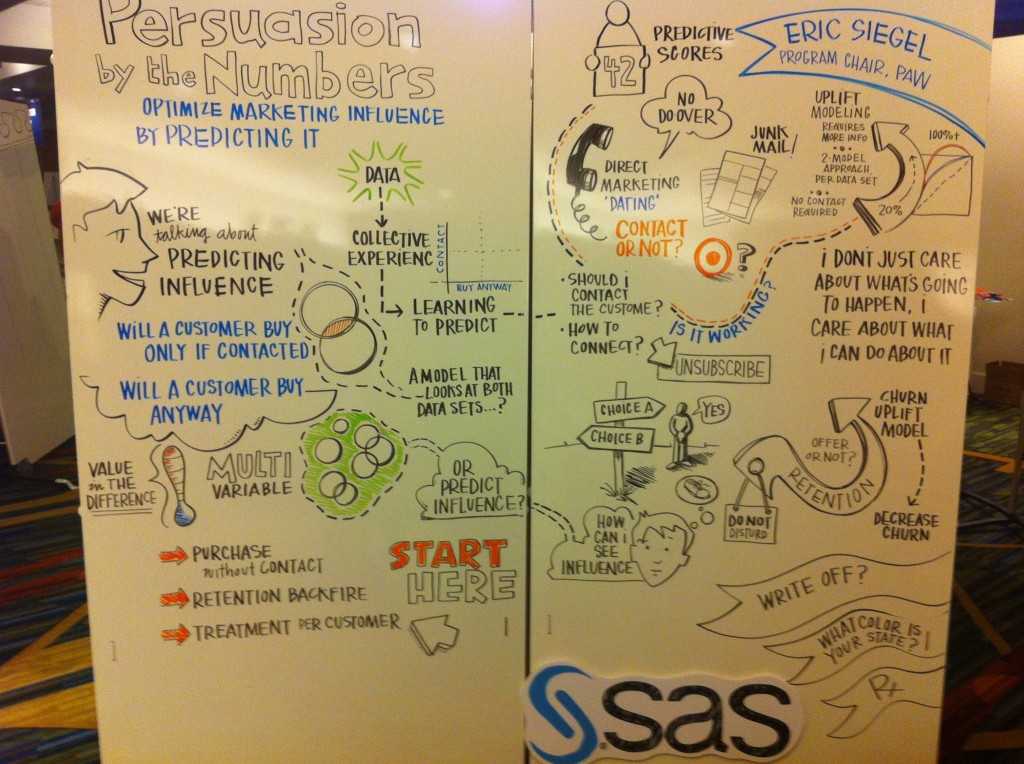 One of the areas that high-performance analytics has the potential to improve is marketing optimization. In fact, almost every presentation I see about high-performance analytics includes a slide or two about marketing optimization.
One of the areas that high-performance analytics has the potential to improve is marketing optimization. In fact, almost every presentation I see about high-performance analytics includes a slide or two about marketing optimization.
To understand why marketing optimization is a big data problem, let's look at the 3Vs to see what types of data marketers are working with when they seek to optimize their interactions with customers.
- Volume: At the most basic level, large companies are easily looking at milions of customers and hundreds or thousands of potential products, services or special promotions to offer those customers. When you look at even the most basic demographic information and past purchase history for each customer, and then try to cross that with hundreds of potential campaigns to understand which offer (or set of offers) is the best to make for each customer, those numbers get really big really fast. Companies used to have one offer they sent out every month, and every customer received it. Today, they can group and target specific segments of customers with special offers and hold off on sending anything to customers that they know will be more likely to respond to next week's offer. When you're considering other constraints and likely response rates, the problem becomes complex pretty fast.
- Variety: Now we move beyond the basic demographic and purchase history data. What if you can also include call records, email histories and social data in your analyses before considering which offers to send to a particular customer? What if you could also look at who influences your customers through social network analysis? You might determine that sending the offer to a segment of top influencers and allowing others to hear about it by word of mouth could actually have more impact than sending the offer to a wider group to begin with. These different types of data all constitute the variety piece of the big data puzzle.
- Velocity: Finally, think about how quickly data is coming at marketers than ever before. Cell phone records, credit card transactions, social media updates. These things are all immediate and they are not strictly structured in rows and columns. If you were able to analyze that information on the spot and optimize your marketing campaigns to react in the moment instead of on a campaign schedule, you would know which customers might respond to a retail coupon when they've "checked in" at the mall. Or which customers prefer offers on social sites instead of in the mail. All of these data points are coming in quickly and need to be reacted to quickly for the best optimization.
Another way to optimize marketing is to use net lift modeling, which is a subset of data mining. For a deeper, more visual look at that subject, check out this drawing from Conference Organizer Eric Siegel's keynote speech today at Predictive Analytics World. There's a lot to glean here about predictive scores, uplift models and using multiple variables to understand influence. The main point is that you're looking for better offers in order to do the more good and the less harm to that customer relationship.
Of course, you can use all the different types of data mentioned above to do uplift modeling too. And that's where you realize, it's not just the bigness of the data that makes these problems complex. In many ways, it's the problems themselves. The complexity and advanced nature of the calculations are not simple to begin with. Then, when you add big data into the mix, you really need high-performance analytics to get the answers you need.
This is day 16 of our "HPA once a day" blog post series. To read more, see all of the high-performance analytics posts on this blog or follow the high-performance analytics rss feed.


2 Comments
Great summary here, Alison! I think this post points to one logical conclusion - using HPA with marketing optimization is how you turn the 3 V's of big data into one big fourth V: Value.
Cheers!
JB
Pingback: Big data answers for your industry and your role - SAS Voices